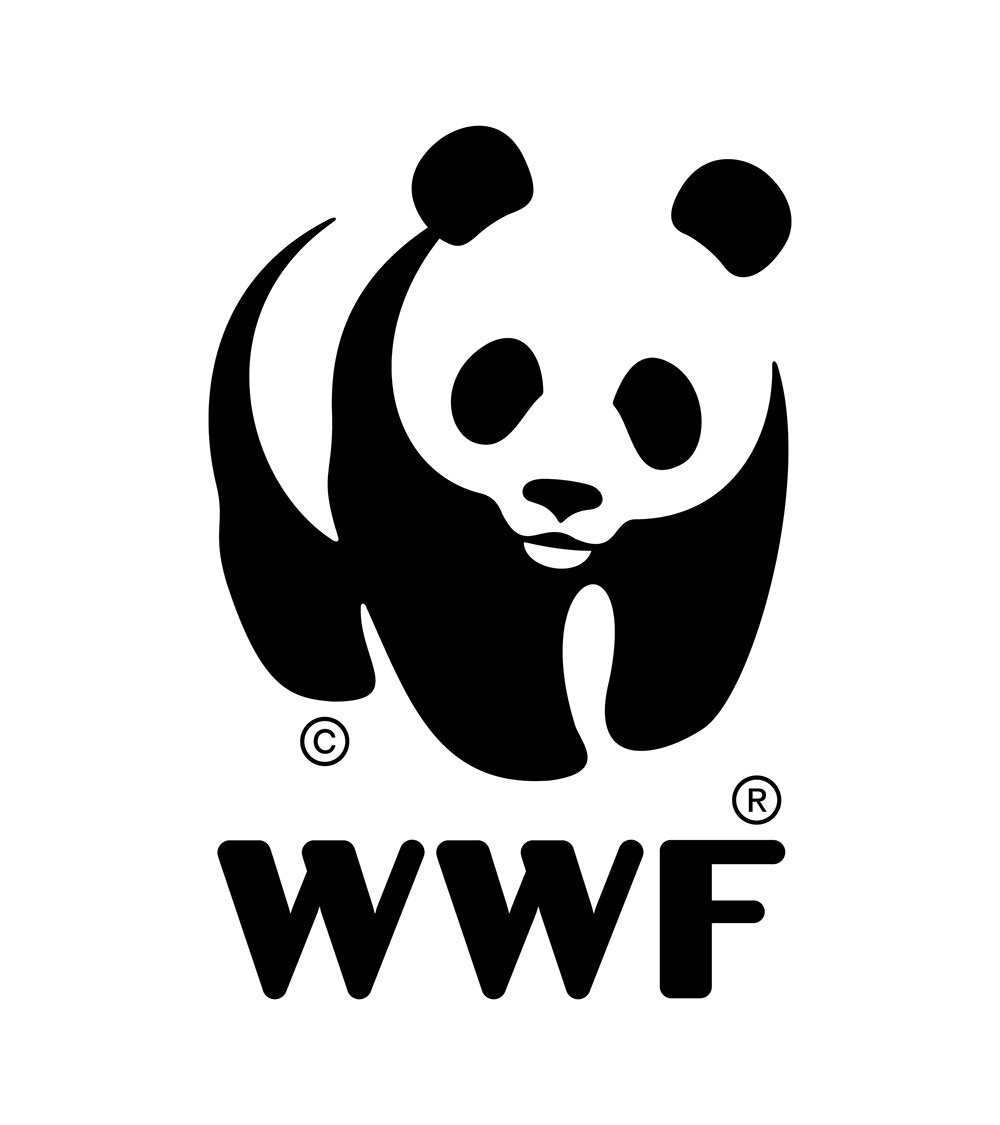Shining a light on the Caribbean’s cetaceans
The crew of Ti Whale An Nou — a programme supported by WWF-Netherlands, Dutch Caribbean Nature Alliance, Corail Caraibes, Orange, the EDF Group Foundation, Animal Welfare Institute, Parc Naturel Régional de la Martinique, Région Guadeloupe, and Collectivité Territoriale de la Martinique. © Caribbean Cetacean Society (CCS)
From humpback whales that make the long journey from their feeding grounds in the North Atlantic each year, to bottlenose dolphins that reside here year-round – the warm waters of the Caribbean contain critical habitats for a diversity of cetaceans.
There is still much to discover about the region’s 33 known cetacean species – more than one-third of the world’s total. Currently, data on population size, spatial distribution, movements, and social structure of cetaceans in the Caribbean is sparse. While seven marine mammal species have been IUCN Red Listed as critically endangered, endangered, or vulnerable, at least eight are considered data deficient.
Ti Whale An Nou – the whale and dolphin research programme that gets its name from a mix of French and English Creole meaning ‘our little whales’ – is starting to fill in these gaps. Coordinated by the Caribbean Cetacean Society (CCS) and supported by a range of partners including WWF-Netherlands, the aim of the programme is to study the diversity, distribution, and numbers of whales and dolphins in the Caribbean to help inform conservation efforts that protect, stabilise, and recover these species.
CCS has just finished their third of six scientific expeditions this year, which covered the North of the Lesser Antilles. Over 15 days, eight species of cetaceans were identified – including a dozen humpback whales on their northward migration, sperm whales, striped dolphins, spotted dolphins, Fraser’s dolphins, short-finned pilot whales, bottlenose dolphins, Pantropical spotted dolphins, and Rough-toothed dolphins – with more than 1,000 individuals observed.
For this expedition, candidates from the Dutch Caribbean were invited to contribute to the research, to build capacity with local communities studying whales and dolphins. Lynn Kuipers, an intern at Sint Eustatius National Parks Foundation (STENAPA), recounted the experience: “I loved being on the boat and learning about marine mammals research including photo identification and listening to the whales and dolphins with the hydrophone, which is a very good experience for future jobs and internships. It is a once in a lifetime opportunity and I am happy that I got the chance to join!”
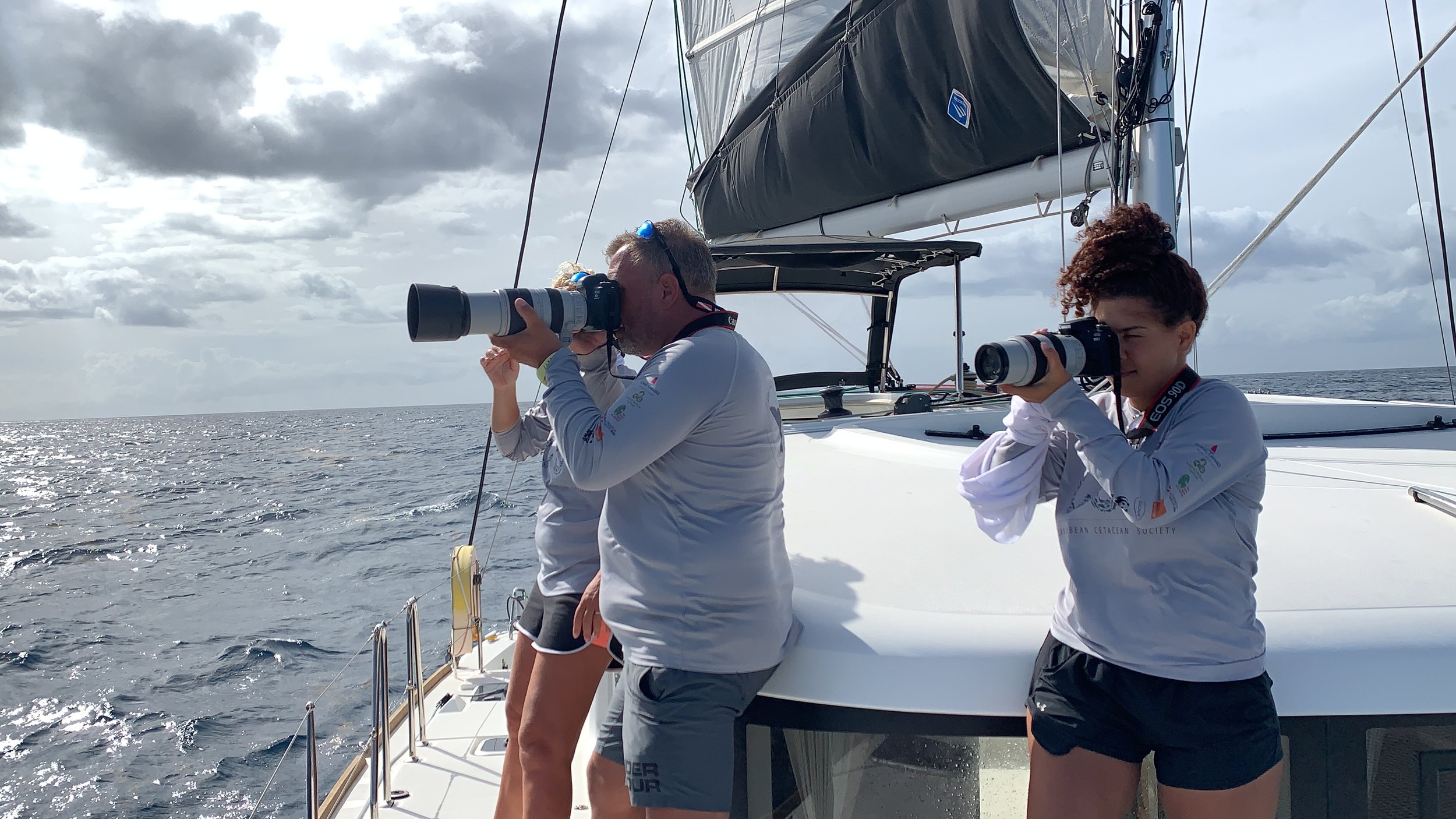
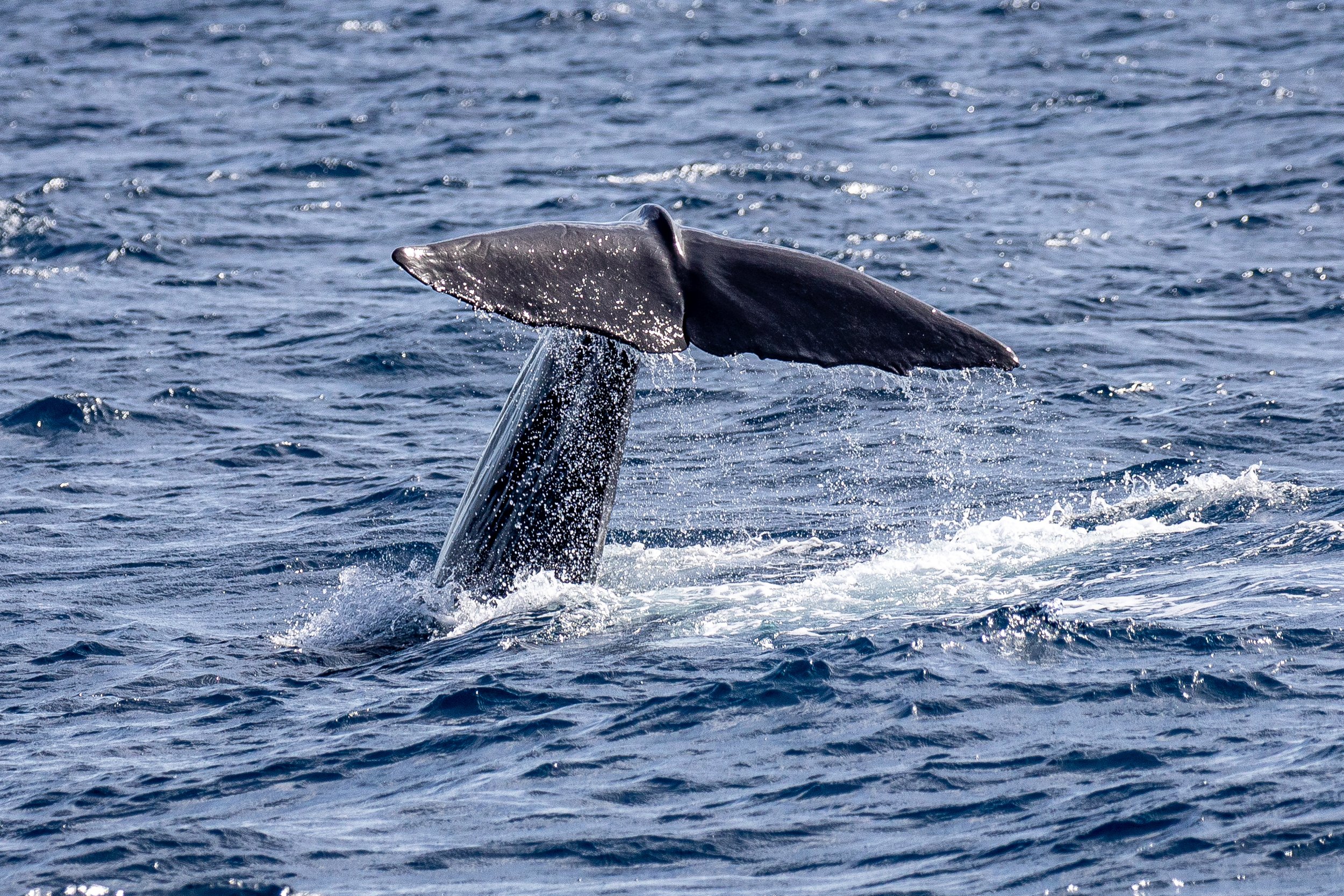
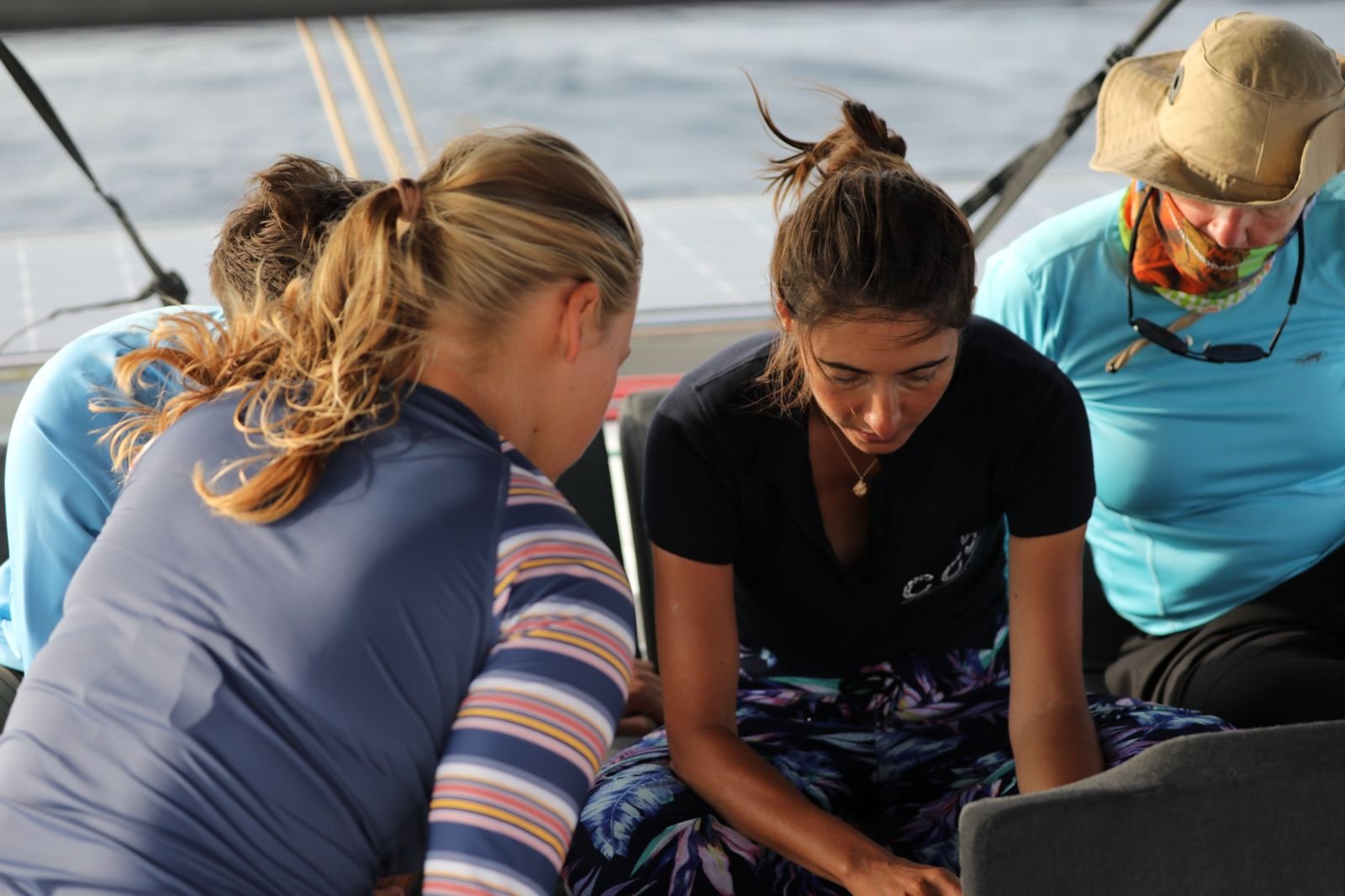
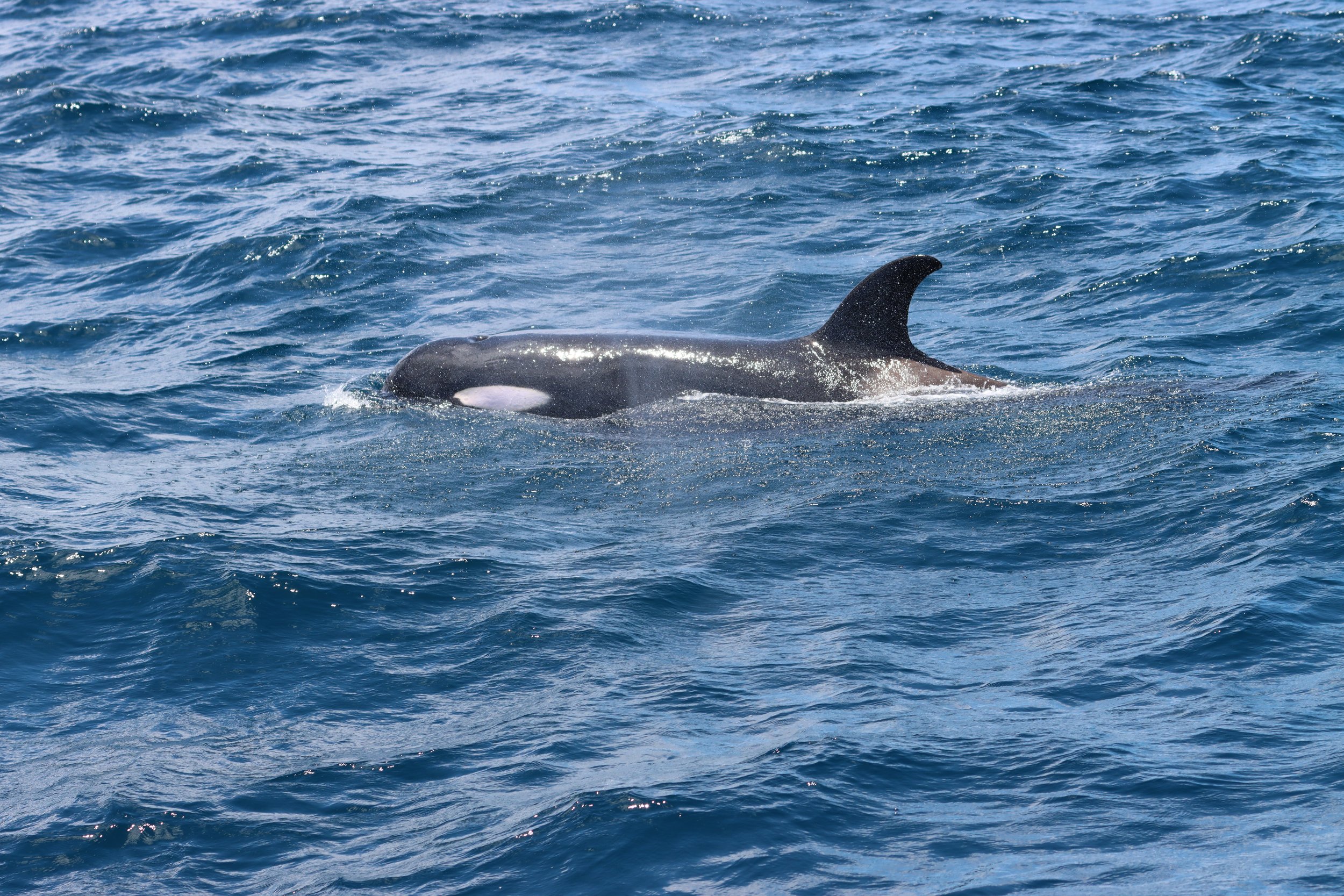
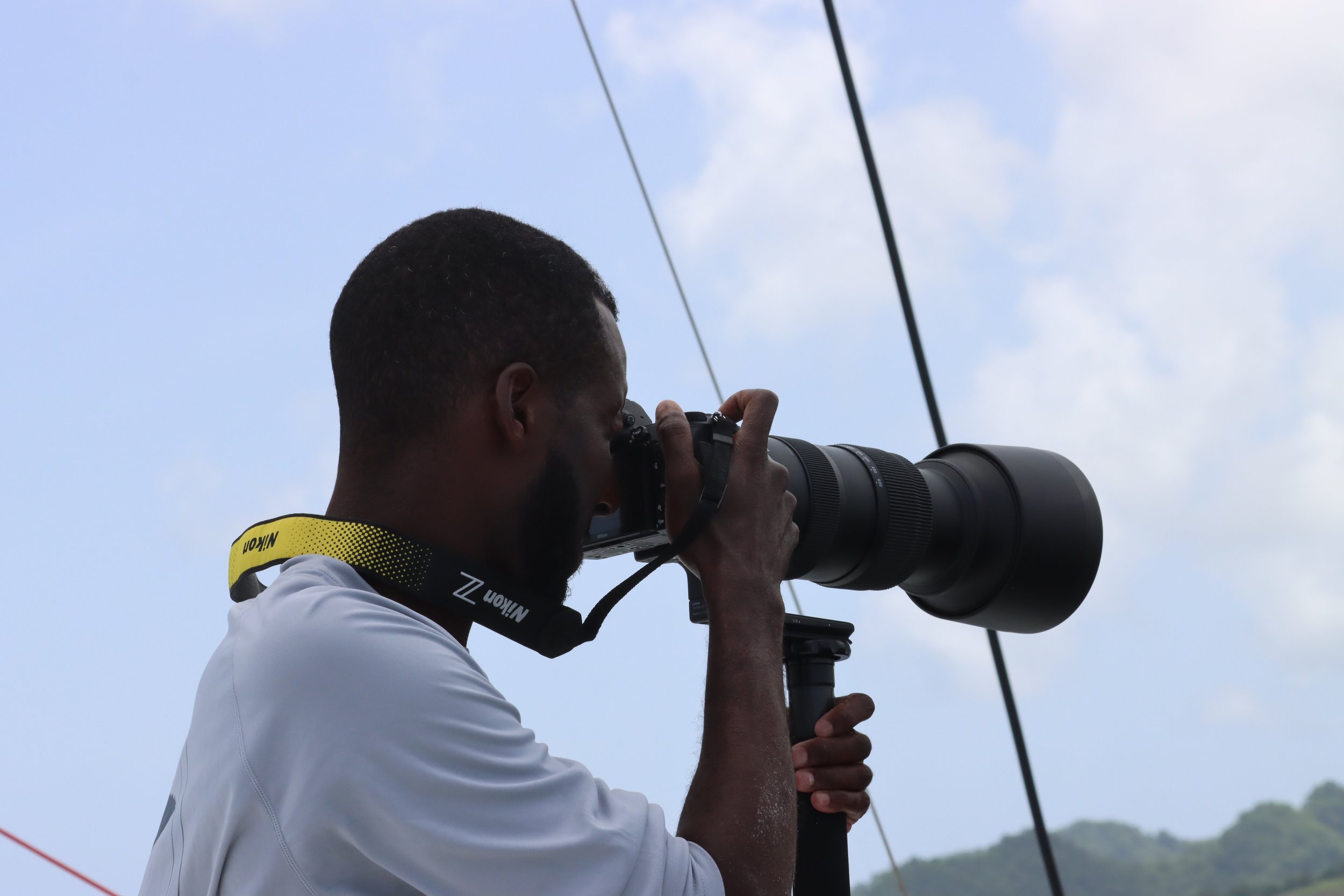
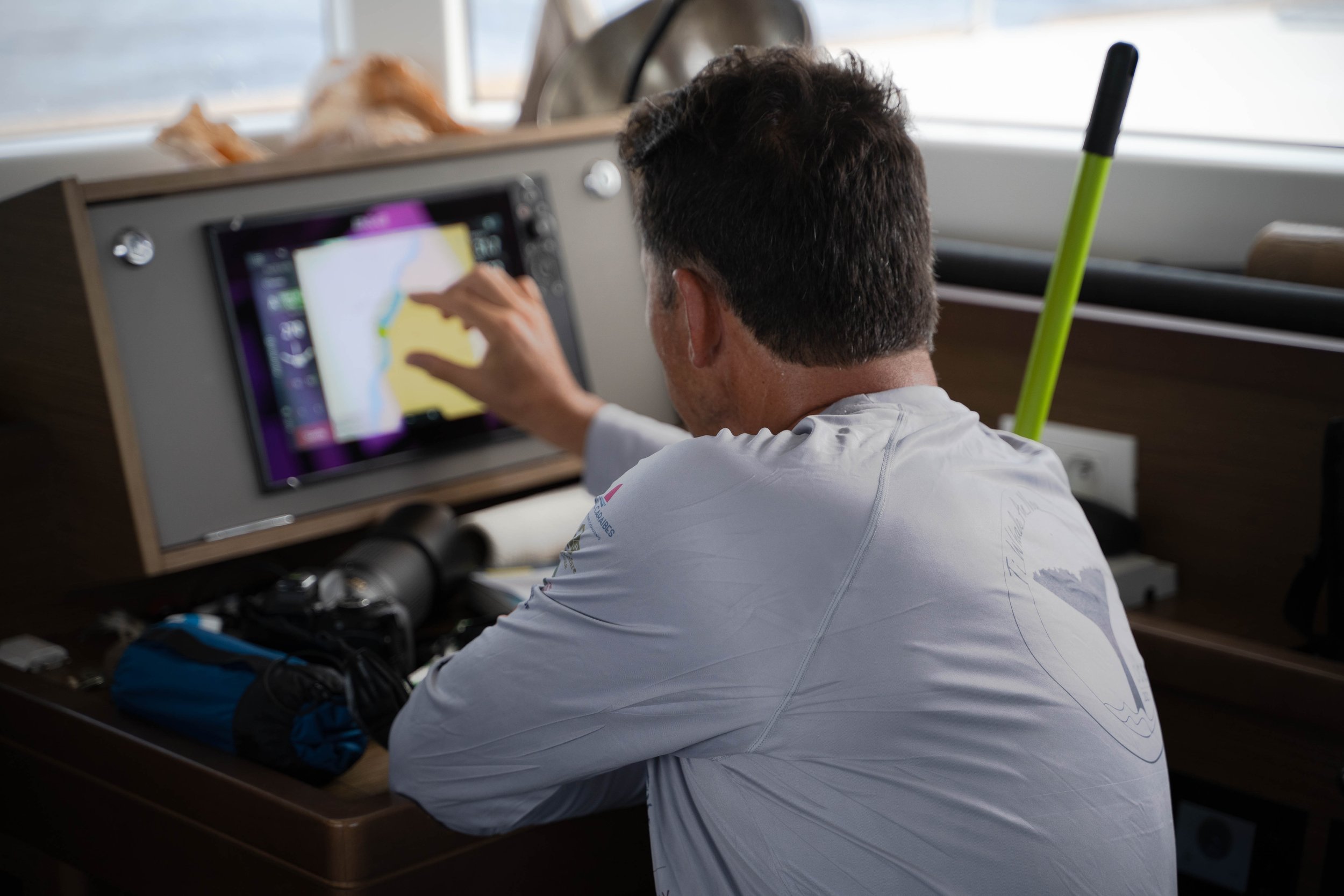
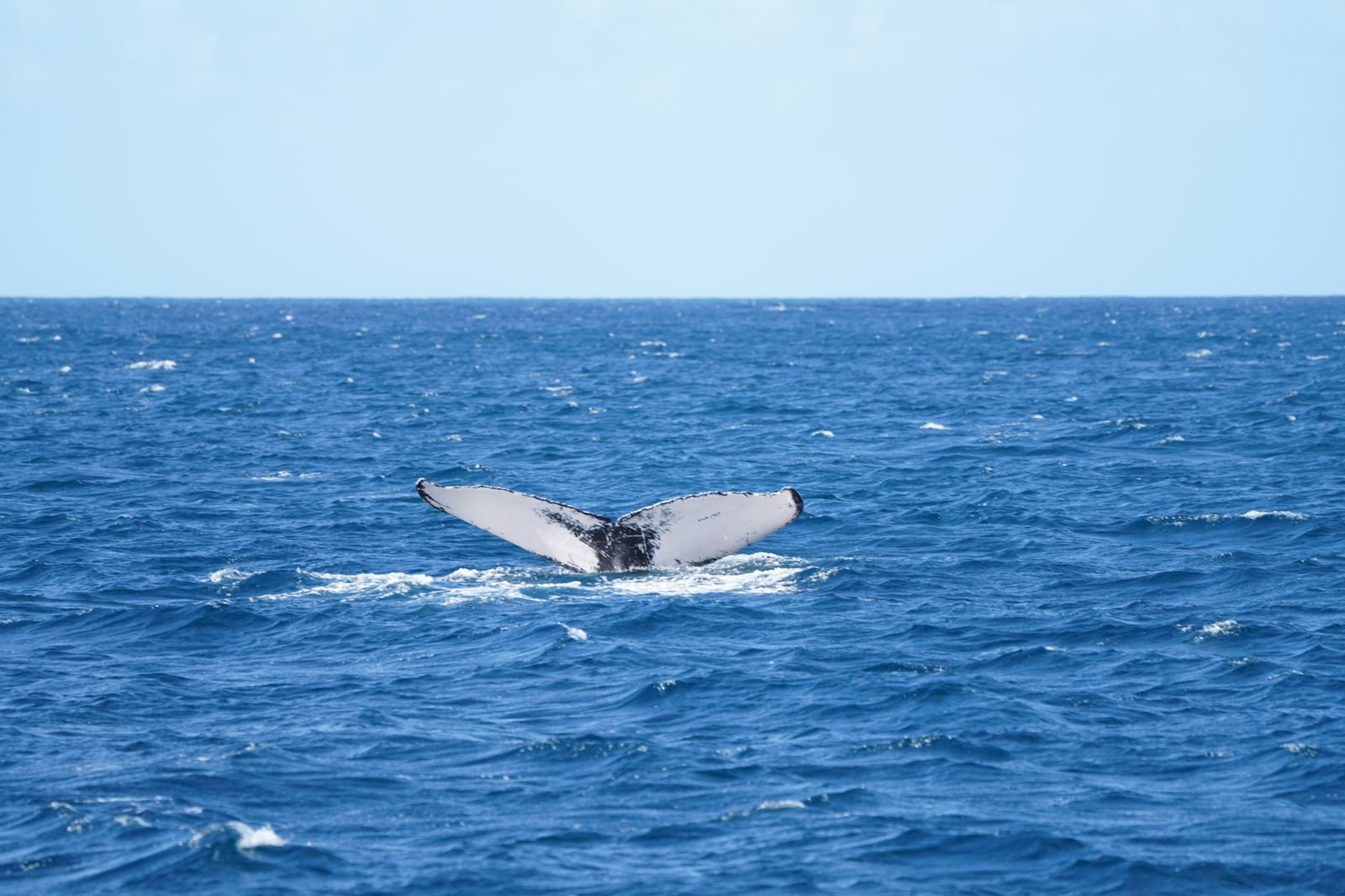
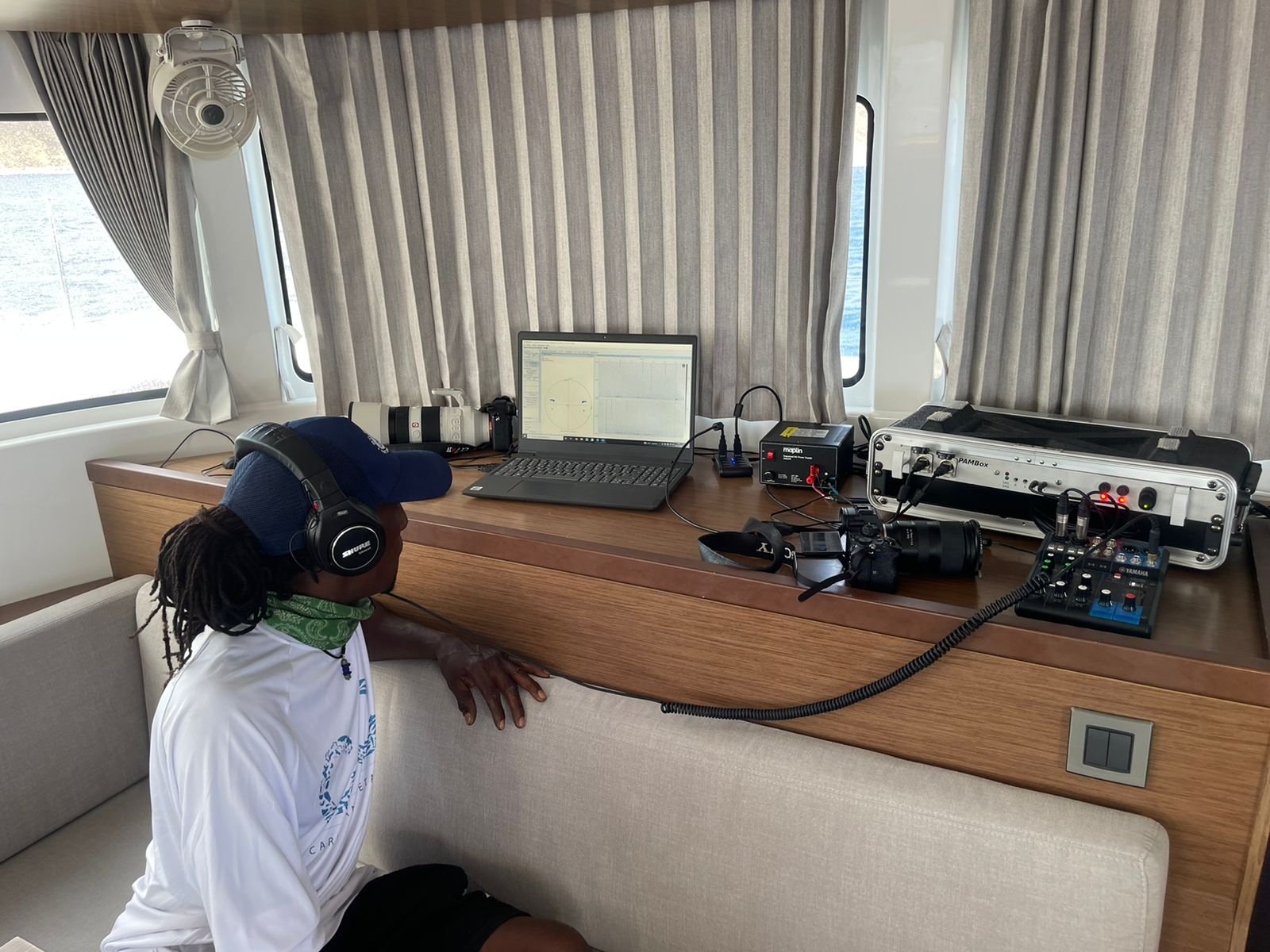

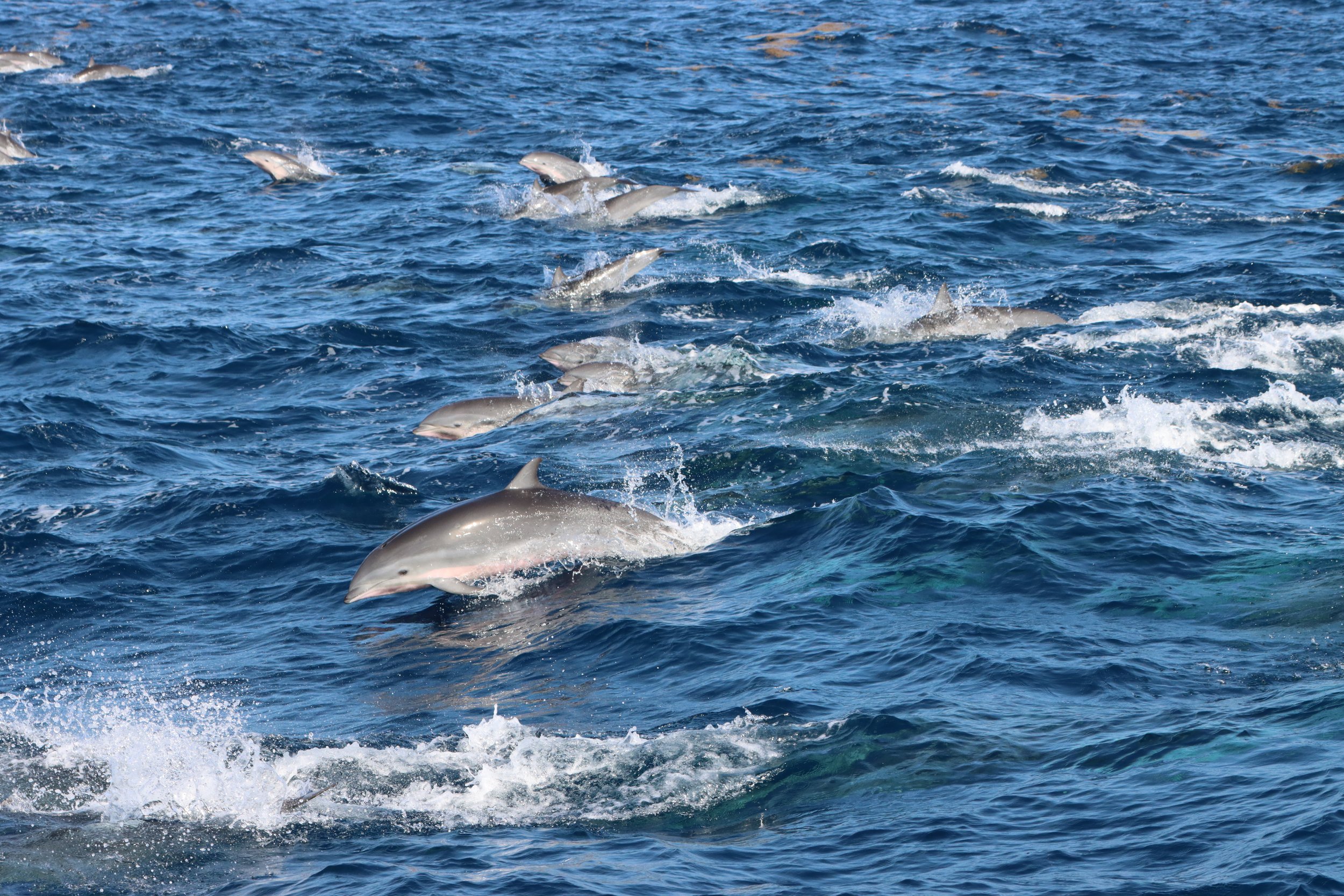

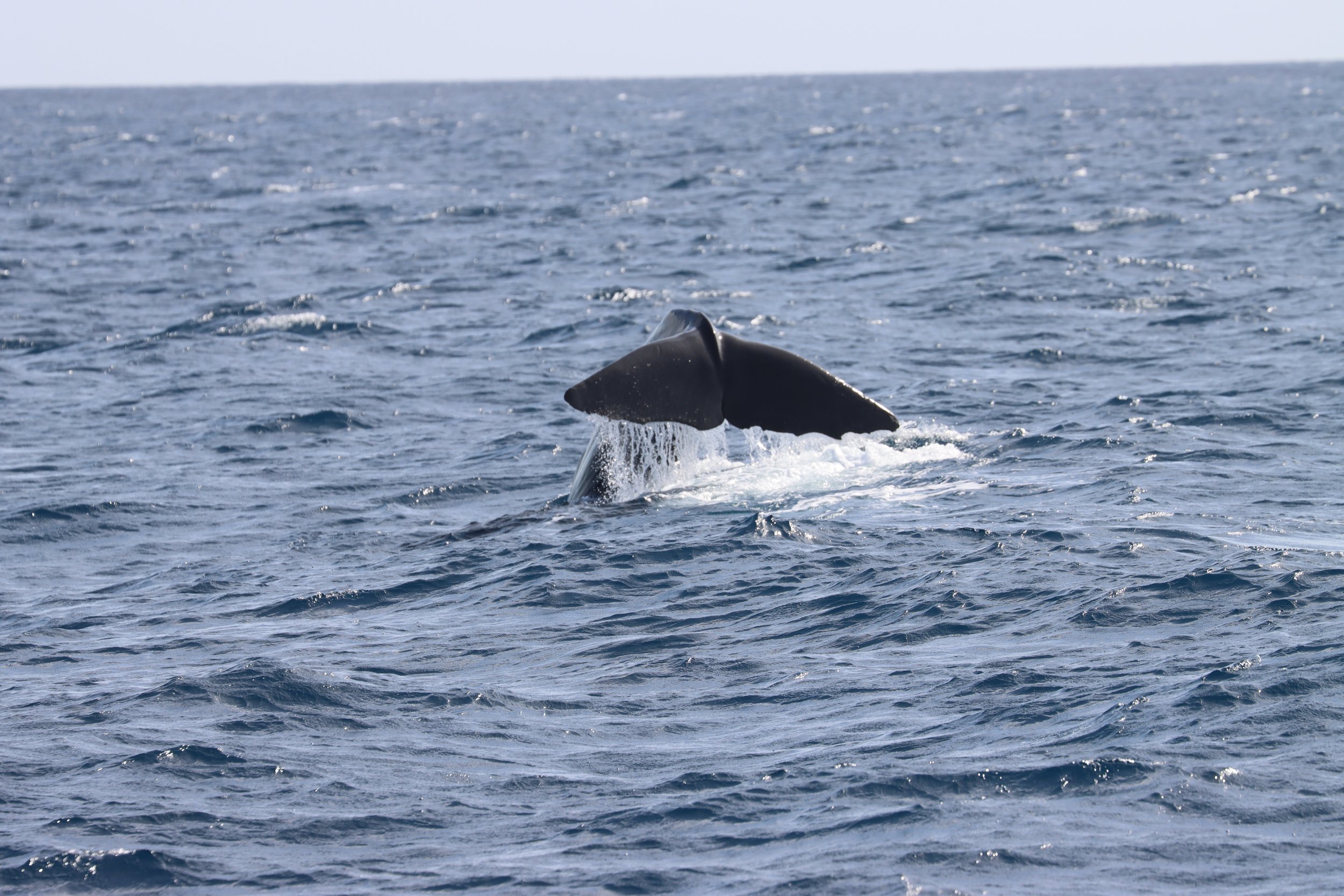
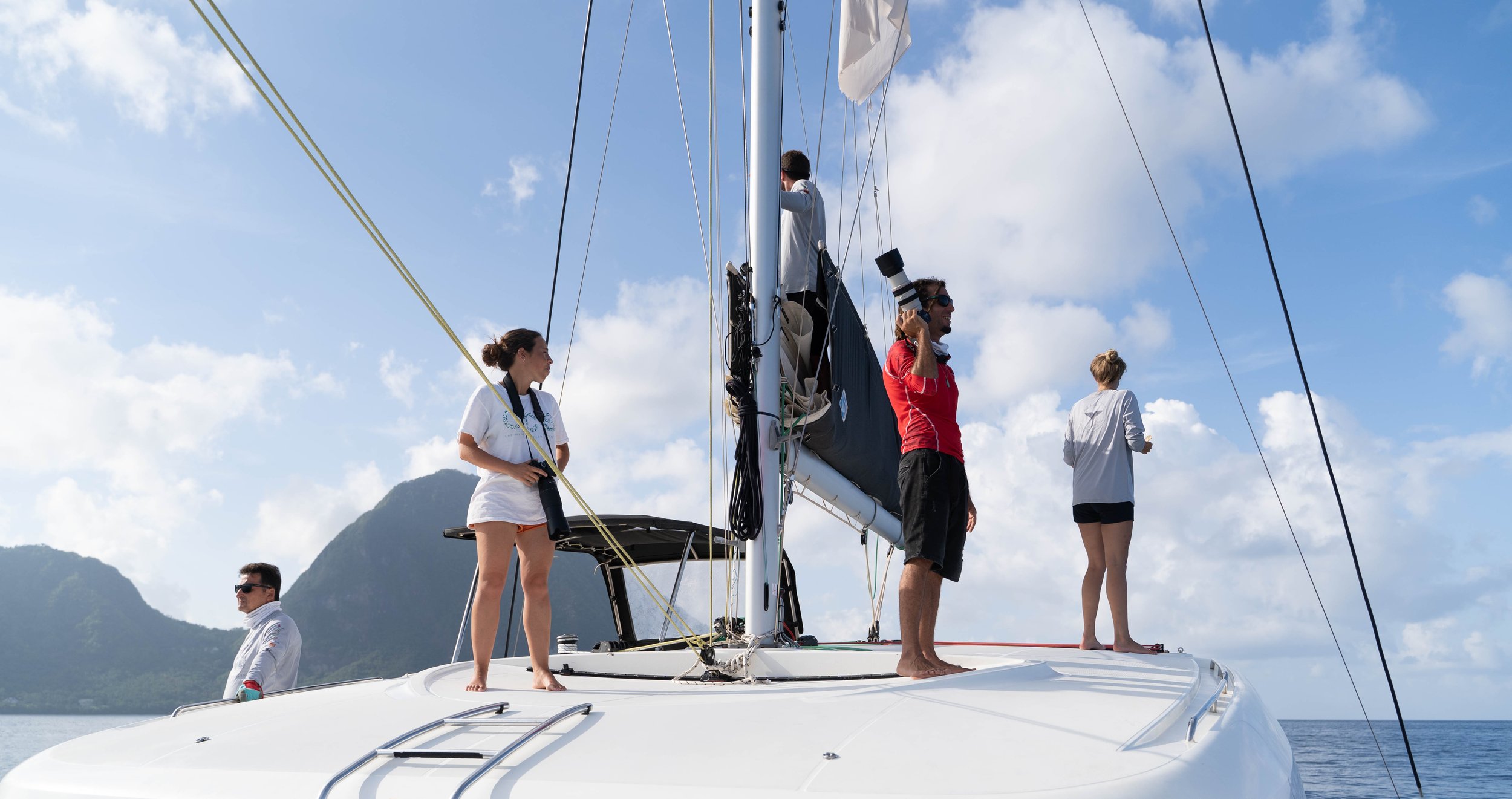
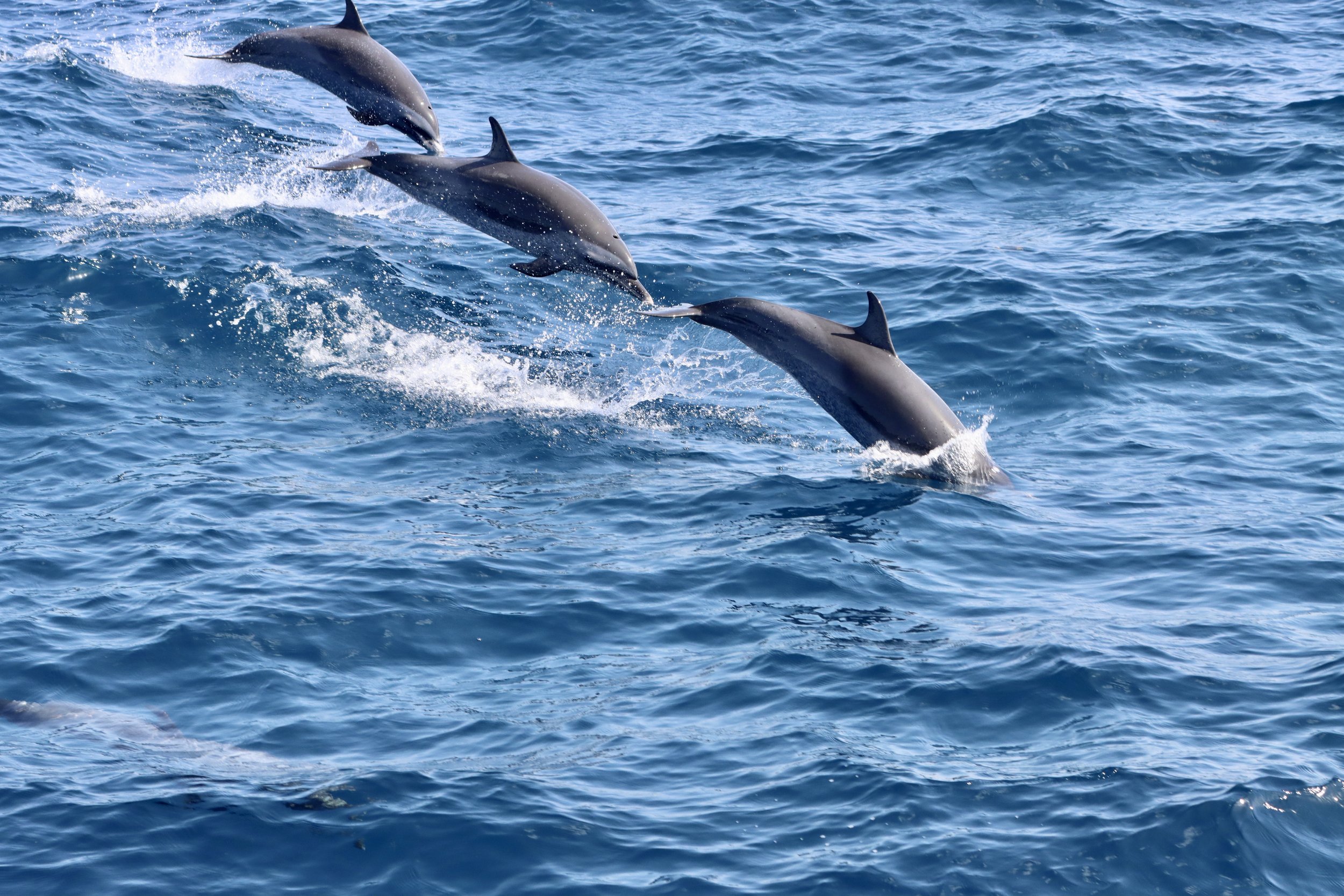
Earlier this year, eight species of cetaceans – among them nine humpback whales, including females with calves, false killer whales, and Melon-headed whales – were spotted on the second expedition, some of which had injury marks from predators and boat propellers. On their first expedition of the year covering Martinique to Grenada, CCS encountered nine species – including orcas, Fraser’s dolphins, pantropical spotted dolphins, pilot whales, humpback whales, sperm whales, dwarf sperm whales, pygmy killer whales, and beaked whales.
To carry out the research, the team combines visual and acoustic techniques. Two observers continuously conduct a visual search during the day while a towed hydrophone system (an underwater microphone) enables listen to vocalisations made by whales and dolphins throughout the day and night. Once close enough to an individual or group, they take photos and log information on species, group size, and presence of young. The photos are then inputted into Flukebook – an open-source cetacean identification platform that enables data sharing within the region and around the world. Meanwhile, movements of the boat, observations, maritime traffic and environmental parameters are geolocated and recorded.
The programme launched last year, with six expeditions spanning from Antigua to Grenada – one of the largest and most comprehensive surveys of whale and dolphin populations in the region to date. Over the course of 96 days at sea, the team traveled 8,970 kilometers – identifying 17 species, recording 191 visual detections, studying an estimated 10,317 individuals, and encountering 29 families of sperm whales. Highlights included acoustic recordings of killer whales in the West Indies and the first photo-identification of this species in Martinique, as well as a rare species of pygmy killer whales. The full report can be found here (pdf).
Ti Whale An Nou is contributing to growing knowledge on the Caribbean's cetaceans. Jeffrey Bernus, Marine Biologist & co-founder of CCS, said: “If you think about how expansive the area is and the length of our expeditions, our research is like quickly shining a flashlight across the region. We don’t have all the information, and we really need to repeat this every year so these populations can thrive for years to come.”
Protecting Blue Corridors – a WWF report released in February 2022 with over 50 science partners worldwide – outlines how whales are encountering multiple and growing threats in their critical ocean habitats – areas where they feed, mate, give birth, and nurse their young – and along their migration superhighways, or ‘blue corridors’. Like cetaceans across the world, those that travel through the Caribbean are at increasing risk of these overlapping stressors – which include entanglement in fishing gear, ship strikes, underwater noise pollution, climate change, and plastic pollution. Large whales that have not recovered from commercial whaling – like the blue whale – are especially vulnerable.
Since whales and dolphins move through the waters of many countries and territories, protecting their blue corridors must be a collaborative effort. The data collected will help identify locations of greatest conservation need and inform efforts that protect and recover these species. For example, the establishment of a network of connected marine protected areas (MPAs) across the Caribbean would help preserve ecological connectivity for cetaceans and strengthen the resilience of the entire ecosystem.
CCS is fostering such cross-boundary solutions to protect blue corridors by sharing their findings with governments, policy makers, partner organisations, and local communities across the Caribbean islands to raise awareness and guide effective regional action plans. Marijn van der Laan, Marine Park Officer, Saba Conservation Foundation – a participant of Ti Whale An Nou’s third expedition – said: “The distribution and migratory patterns of the wide variety of endangered cetacean species in the Caribbean go far beyond any national boundary. To safeguard the future existence of these magnificent species, cooperation between the different islands is necessary.”
